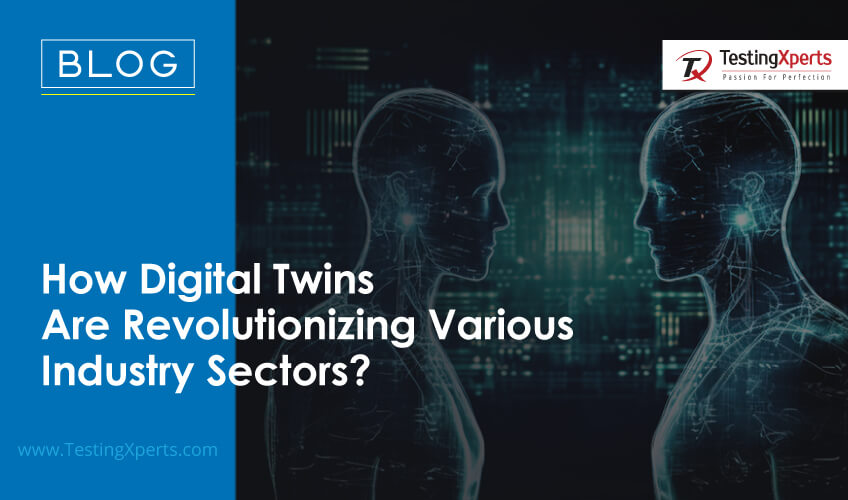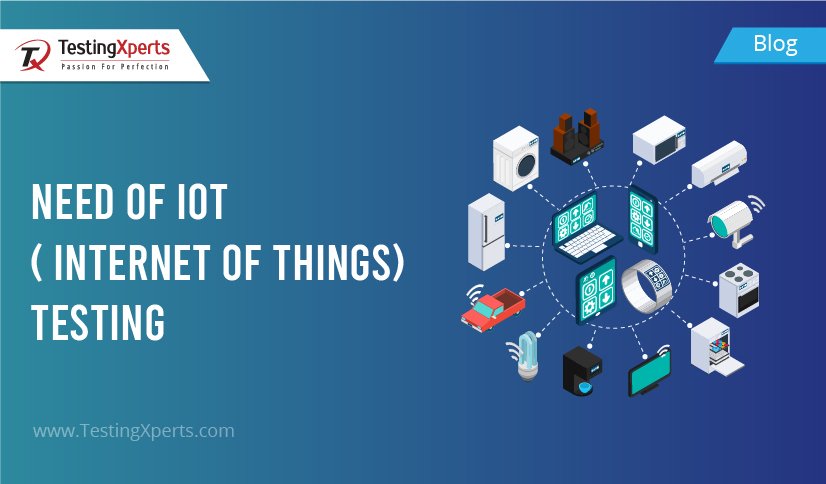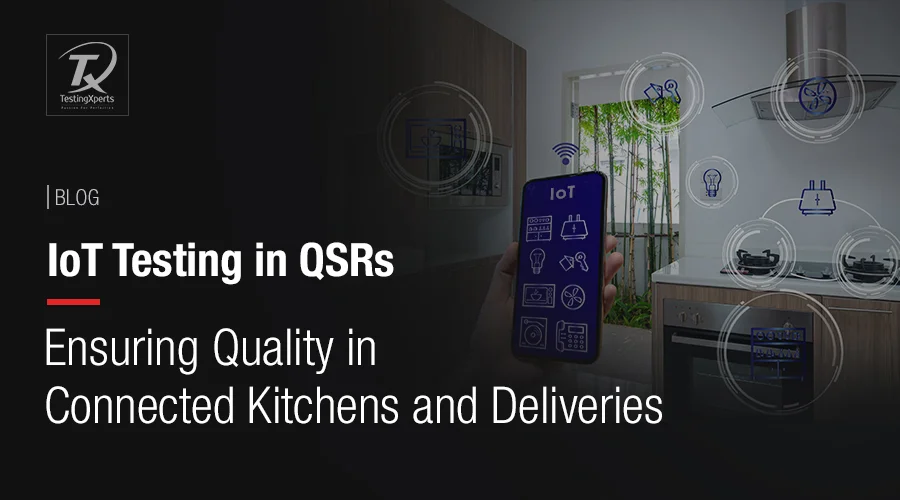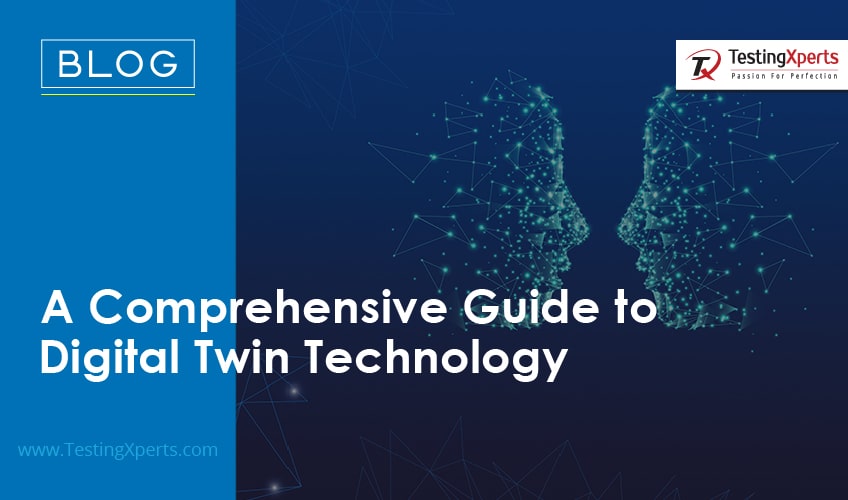
- What is a Digital Twin?
- Evolution of Digital Twin Technology
- Benefits of Digital Twin Technology
- Key Components of a Digital Twin
- Technologies Behind Digital Twin
- Digital Twins Lifecycle and Development
- Types of Digital Twins
- Top 5 Digital Twin Software
- Conclusion
- How can TestingXperts help with Digital Twins technology?
In this age of Industry 4.0, where interconnectedness and data-driven decision-making are important, digital twins have emerged as an instrumental tool, enabling businesses to bridge the gap between physical and digital advancements. According to MarketsandMarkets, this technology is expected to reach USD 48.2 billion by 2026 at a CAGR of 58%.
This technology lets industries digitally replicate their operations or assets, providing unparalleled insights and forecasting abilities. By creating virtual replicas of physical assets, systems, or processes, companies can gain invaluable insights, predict outcomes, and optimize operations like never before. This seamless synchronization of the physical and virtual worlds propels industries into a future where challenges are met with foresight and opportunities are leveraged with precision.
What is a Digital Twin?

A digital twin is a virtual representation of a physical object or system and a part of the Industrial Internet of Things (IIoT). Using real-time data, sensor inputs, and other variables, digital twins create an identical virtual model of something in the physical world. It could range from simple objects to complex systems like jet engines, factories, or cities.
Evolution of Digital Twin Technology
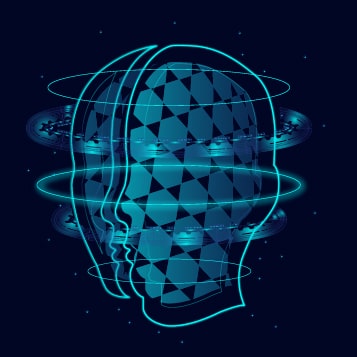
This technology dates to NASA’s use of full-scale mock-ups to resolve issues on space missions. Now, with the advent of IoT and advancements in data analytics and machine learning, this technology offers unparalleled benefits to industries far and wide.
They are not just simple replicas but detailed and functional models that allow for simulations, analyses, and control of systems even when those systems are in operation. This leads to new industrial process optimization and predictive maintenance, making operations more efficient and cost-effective.
Benefits of Digital Twin Technology
Digital twins offer numerous benefits across many industries, from manufacturing and healthcare to retail. Here are some significant benefits:
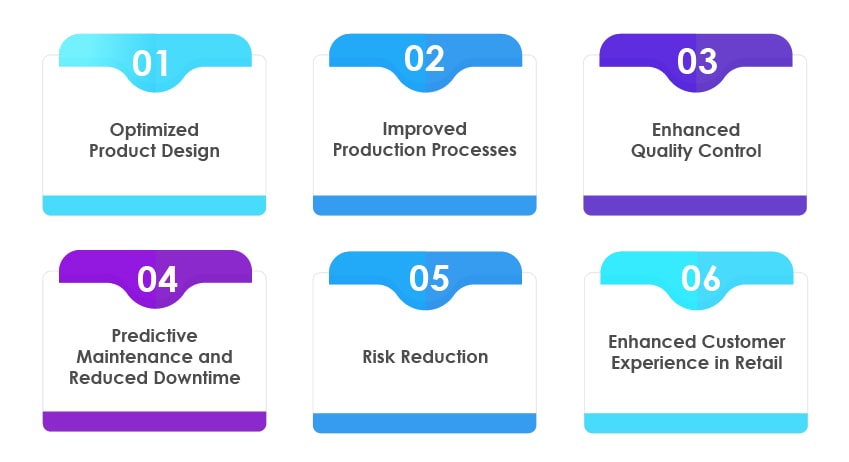
Optimized Product Design:
Digital twins enable engineers and designers to visualize products, analyse performance, and modify the virtual environment before creating physical prototypes. This process saves time, reduces costs, and allows for the development of better-quality products.
Improved Production Processes:
By simulating the manufacturing process in a digital environment, businesses can identify potential bottlenecks, evaluate different scenarios, and optimize efficiency.
Enhanced Quality Control:
Digital twins can detect errors in real-time, allowing immediate corrective actions. This real-time monitoring and predictive analytics significantly improve the quality of end products.
Predictive Maintenance and Reduced Downtime:
Digital twins can forecast wear and tear on machinery based on real-time data, enabling predictive maintenance. This approach reduces unplanned downtime, extends equipment life, and cuts maintenance costs.
Risk Reduction:
Before implementing changes in the physical world, businesses can simulate them on the digital twin. This approach helps identify potential issues, assess the impact of changes, and make informed decisions, thus mitigating risk.
Enhanced Customer Experience in Retail:
When paired with ChatGPT in the retail industry, it can analyze customer interactions in real-time, predict purchasing behavior, and offer personalized recommendations. It improves the customer experience, drives sales, and optimizes inventory management.
Key Components of a Digital Twin
To function effectively, digital twins must integrate five key components:
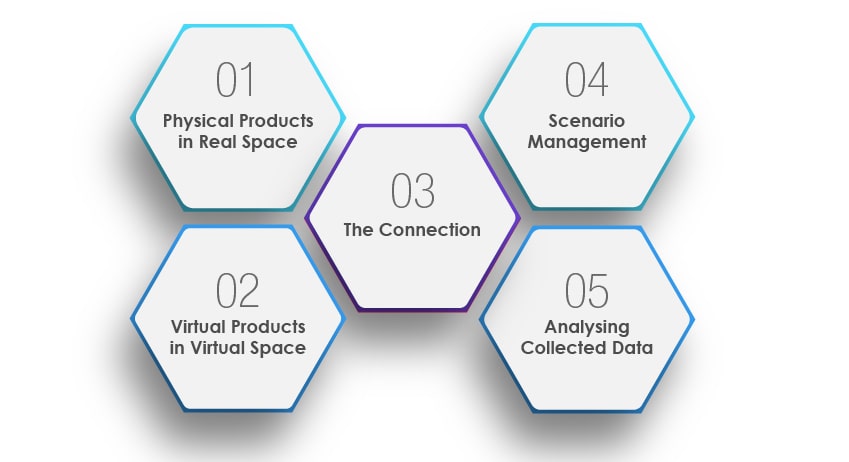
Physical Products in Real Space:
This encompasses the real-world item or system being mirrored. Sensors attached to this item gather real-time data for the digital twin.
Virtual Products in Virtual Space:
This digital counterpart is created using CAD (Computer-Aided Design) or other modelling tools. It mirrors the physical object in detail and can reflect changes or anomalies in real-time.
The Connection:
Data flows between the physical and virtual products through IoT. This connection is crucial as it provides the real-time operational information the digital twins use to simulate and predict outcomes.
Scenario Management:
Digital twins allow creating and testing different scenarios in a virtual environment. It can include testing the potential impact of operational changes, disaster management planning, or understanding the implications of strategic decisions. It’s crucial in making informed, data-backed decisions and reducing business risk.
Analysing Collected Data:
A vital part of this tech innovation is its ability to analyze the collected data. It uses advanced algorithms to analyze patterns, detect anomalies, and predict future behavior. This data analysis can lead to actionable insights that can improve efficiency, reduce costs, and enhance the overall performance of the physical counterpart.
Technologies Behind Digital Twin
The emergence of Digital Twins, powered by a combination of cutting-edge technologies, that work together to replicate, analyse, and predict real-world scenarios. Let’s look into these critical technologies powering digital twins:
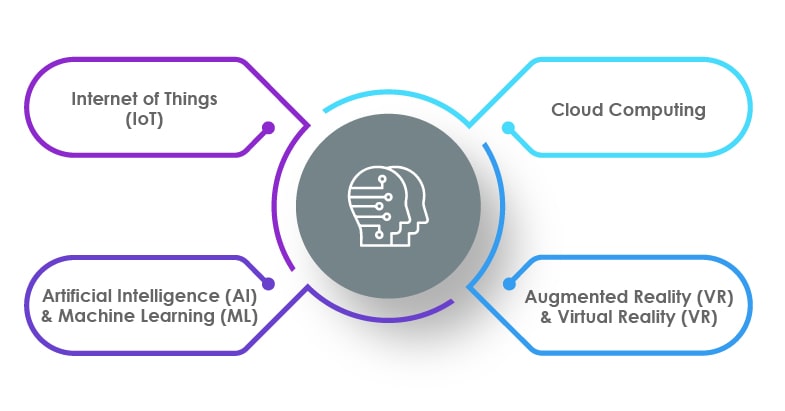
Internet of Things (IoT):
IoT is the backbone of this tech innovation. It facilitates the collection of real-time data from physical assets using connected sensors. This continuous flow of data ensures that the digital replica is accurate and in real-time mirrors the state of the physical asset or process.
Moreover, IoT allows for bidirectional communication. Changes made in the digital twins can be executed in the physical world via connected devices. In the context of the retail industry, IoT devices, coupled with AI tools like ChatGPT, can provide a hyper-personalized shopping experience. For instance, imagine smart fitting rooms that suggest accessories based on the outfit you’re trying, essentially elevating the customer experience.
Artificial Intelligence (AI) & Machine Learning (ML):
The troves of data collected by IoT devices feed the intelligent core of digital twins – AI and ML. These technologies enable digital twins to learn from the data, recognize patterns, predict future outcomes, and make autonomous decisions.
In a retail scenario, ML algorithms can analyse customer behaviour, predict trends, and provide personalized recommendations, turning an ordinary shopping trip into an extraordinary one. AI tools like ChatGPT can also interpret and act on this data, communicating with customers naturally and engagingly.
Cloud Computing:
Cloud computing provides the computing power necessary to process the vast amounts of data IoT devices generate. It enables the storage, analysis, and accessibility of this data in real-time, irrespective of geographical location.
Furthermore, the scalability and flexibility of the cloud make it an ideal platform for managing digital twins. Businesses can scale their digital twins with their physical assets, making it cost-effective.
Augmented Reality (VR) & Virtual Reality (VR):
AR and VR technologies add another dimension to digital twins. They provide immersive visualization capabilities that allow users to interact with the digital twin in a 3D environment.
In the retail industry, AR and VR can transform how customers shop. Imagine virtually trying on clothes or viewing how a piece of furniture would look in your home before making a purchase. It’s not science fiction – it’s a reality made possible by integrating AR/VR technology and digital twins.
Digital Twins Lifecycle and Development
Creating a digital twin is a multi-step process that begins with conceptualization and continues even when the physical counterpart is no longer operational. Let’s look into the process:

Step-1: Conceptualization
The first step involves defining the scope and purpose. It determines the data that needs to be collected, the analysis required, and the desired outcomes.
Step-2: Design and Development
This phase involves creating the digital representation of the physical asset or system. Data models are developed, and IoT sensors are configured and deployed to collect the necessary data.
Step-3: Implementation and Validation
Here, the digital twin is activated and receives real-time data from the physical asset. This data is analyzed to ensure it accurately mirrors its physical counterpart.
Step-4: Operation and Evolution
It will now begin to provide actionable insights, predict outcomes, and enable optimized decision-making. Over time, this technology will evolve as more data is collected, resulting in more accurate predictions.
Step-5: Retirement
Even when the physical asset is decommissioned, it will continue to provide value. It can be used to inform the design and operation of future assets.
Types of Digital Twins
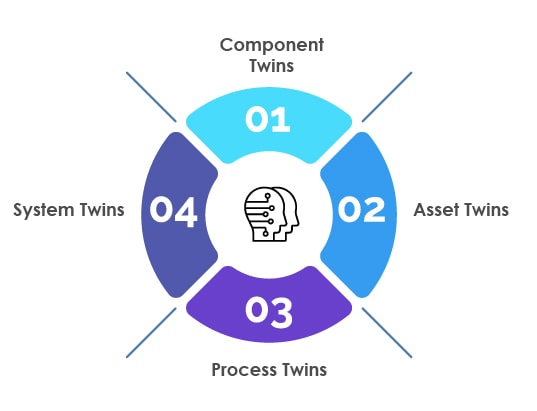
As the adoption of digital twins’ technology amplifies across industries, it’s essential to comprehend the different types of digital twins that can be utilized.
Component Twins:
These digital replications emphasize individual product or system constituents. They enable engineers to virtually examine and design singular elements like mechanical parts or electronic modules. Organizations can enhance component design, predict maintenance needs, and improve product reliability by simulating these components’ actions and interactions. AI tools like ChatGPT can use insights from Component Twins to optimize inventory management in retail.
Asset Twins:
These manifest complete physical units in a digital form, such as machinery or entire facilities. They provide a comprehensive view of an asset’s lifecycle, accumulating data from initiation to termination. Asset Twins enable remote asset monitoring, performance tracking, and data-informed maintenance and lifecycle management decision-making. They are particularly beneficial for managing complex assets like industrial machinery or buildings.
Process Twins:
These are digital representations of operational processes. They simulate the process flow, interactions, and outcomes to identify bottlenecks, inefficiencies, and potential improvements. They are used extensively in industries like manufacturing and logistics to optimize operations, reduce waste, and increase efficiency.
System Twins:
They represent an entire network or system of interconnected assets and processes. They provide a holistic view of how different components interact and affect each other. System Twins are crucial in complex environments like smart cities or integrated supply chains, where various features and processes must work harmoniously.
Top 5 Digital Twin Software
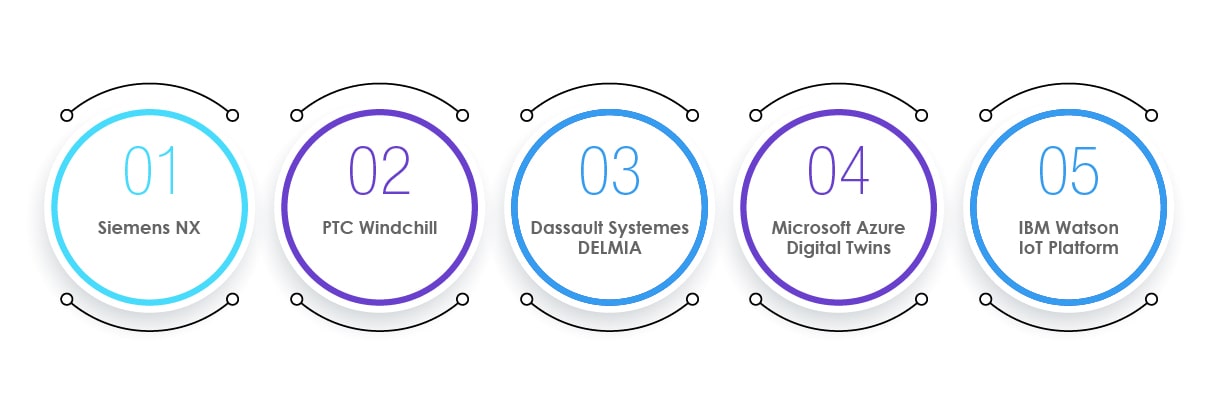
Siemens NX:
A comprehensive tool by Siemens, NX offers integrated product design, engineering, and manufacturing solutions. Its CAD/CAM/CAE capabilities make it a perfect choice for organizations aiming for holistic digital twins’ solutions.
PTC Windchill:
It is an end-to-end PLM (Product Lifecycle Management) tool that aids in creating and managing digital twins. It offers real-time updates, analytics, and IoT data integration, making it suitable for companies looking to optimize their product lifecycle.
Dassault Systemes DELMIA:
It offers an expansive suite of manufacturing software tools, including creating and utilizing digital twins. Its simulation capabilities excel, allowing businesses to predict and optimize manufacturing processes.
Microsoft Azure:
It provides a platform to create, run, and manage digital twins of the physical environment. Its strong suit is its seamless integration with IoT, enabling real-time updates and interactions.
IBM Watson IoT Platform:
It uses AI, like the retail friendly ChatGPT, and advanced analytics to derive insights from IoT data. It offers features for creating and managing digital twins, making it a comprehensive choice for businesses seeking to enhance their IoT strategies.
Conclusion
Digital twins technology signifies a notable shift in industrial operations, providing in-depth insights into product performance, system efficiency, and operational procedures. Its benefits include enhancing predictive capabilities, optimizing processes, and minimizing costs. The fundamental components of this technology, ranging from data models to scenario management, provide a robust foundation for its functionality, enabling virtual replication and interaction with physical systems. Furthermore, the emergence of powerful tools such as Siemens NX, PTC Windchill, and Microsoft Azure facilitates wider adoption of digital twins’ technology, making its advantages accessible to a broader range of organizations.
How can TestingXperts help with Digital Twins technology?

TestingXperts, a leading provider of next-generation QA and software testing services, offers a wide range of solutions that enable businesses to harness the full potential of this technology. With domain expertise in AI/ML, cloud and IoT testing, TestingXperts provides a comprehensive approach to developing and refining Digital Twins. Our certified QA professionals employ these cutting-edge technologies to create, validate, and refine a digital model that accurately mirrors their physical counterparts.
• In AI testing, the team at TestingXperts leverages AI to drive the efficient execution and management of test suites. They utilize AI’s predictive capabilities to foresee potential system bottlenecks, enabling businesses to proactively address issues that might affect the technology’s performance.
• Concerning Machine Learning testing, TestingXperts ensures the reliability of ML algorithms embedded within this technology. Through rigorous testing, we ensure these algorithms accurately analyse data and generate correct predictions, leading to effective decision-making.
• As for IoT testing, our experts ensure seamless connectivity and communication among the IoT devices linked to the digital twin. They validate the integrity of data exchange, ensuring that the physical asset’s real-time status and functioning are precisely reflected in its end product.
Contact us now to know how we can help you in making Digital twin technology reliable, secure, and functional.
Stay Tuned to know the impact of Digital Twin Technology across various industries.
Discover more
Get in Touch
Stay Updated
Subscribe for more info


